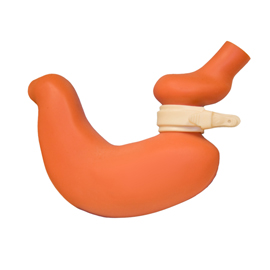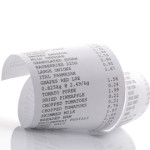
REALIZE Band is another adjustable gastric band that works similarly to LAP-BAND to help people people lose weight.
The gastric band is placed around the top portion of the stomach during laparoscopic surgery. An access port located under the skin in the abdomen is connected to the band by tubing and is used to fill a balloon inside the band with a saline solution.
As the gastric band is tightened, the stomach is divided into an upper pouch, which holds about 4 ounces of food, and a lower pouch. When properly tightened, the band will prevent food from passing into the lower pouch, allowing you to feel satisfied on much less food. Like the LAP-BAND, the REALIZE band helps people to lose weight by dramatically reducing how much food can be eaten at each meal.
The gastric band is also intended for long-term use and requires follow-up visits to adjust the fitting of the ring around the top portion of the stomach. The REALIZE band will not prevent you from taking in liquid calories. In order to lose weight with the REALIZE band, you’ll want to focus on eating three small meals a day of solid food and drinking liquids that contain very few calories.
Differences between REALIZE band and LAP-BAND
The REALIZE band is owned by Johnson & Johnson and is perhaps best known for its low-profile port. While the LAP-BAND System now offers a lower profile model, the REALIZE band has always been designed with an access port that is wider in circumference but less noticeable under the skin than earlier LAP-BAND versions. As you lose a significant amount of excess weight, it may be important to you to have an access port that’s more difficult to see and feel in your abdomen.
The access port for the REALIZE band is attached with a device that triggers claw-like hooks to attach to the muscle. This self-clamping system may reduce the risk for slippage or port flipping. However, your surgeon may still to choose to suture the REALIZE band’s port in place. The LAP-BAND is secured to the muscles with sutures or mesh.
Talk to your surgeon about which adjustable gastric banding system is best for you. The shape and size of your body as well as your surgeon’s personal preference regarding small procedural differences may play a role in deciding between the two brands.


